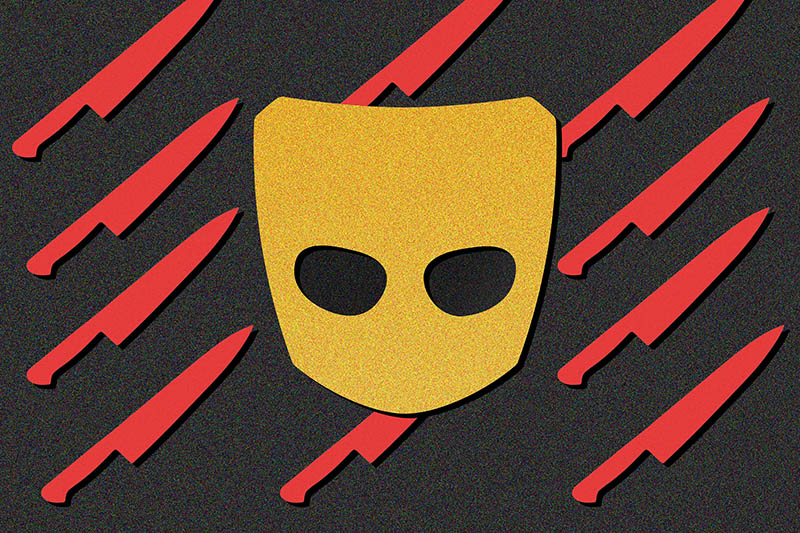New study examines the differences between gay and straight suicides
Gay people are more likely to experience mental health problems, depressed moods, and intimate partner problems

A new study into suicide in America has drawn some eye-opening conclusions about the differences between LGBTQ and straight people who take their own lives.
Research published in the American Journal of Preventive Medicine compared suicides among gay and lesbian people to those of the general population, with data covering more than 120,000 suicide deaths from 18 states between 2003 and 2014.
Of those suicide deaths, 0.5% were identified as being LGBT, with a majority — 53.9% — being gay men, followed by lesbian women (28%), transgender people (10.4%), and bisexuals (7.5%).
Among some of the study’s findings:
- The largest proportion of suicide deaths were among those aged 40-59 — this was true for both LGBT people and non-LGBT people.
- However, suicide rates were anywhere from two to six times higher among LGBT youth (15-24) than their non-LGBT peers
- Gay, bisexual and transgender people were more likely to utilize hanging, strangulation, or suffocation than any other method
- Lesbian women were split between that (35.6%) and firearms (35.1)
- Non-LGBT people were most likely to use a firearm (51.7%), though when broken down by gender, non-LGBT women were more likely to use poisoning.
- Gay and lesbian people were more likely than their straight counterparts to have a current diagnosed mental health problem, current depressed mood, a history of suicidal thoughts or plans, or previous suicide attempts.
With regards the high rates of experiencing a “depressed mood” among gay and lesbian people, the study’s authors argue that the differences with straight people “may be linked in part to the minority stress and discrimination that lesbian and gay male populations experience.”
In addition to depressed mood, gay and lesbian people were also more likely to have an “intimate partner problem” than straight men and women — particularly lesbian women, with almost 71% of suicide deaths including an intimate partner problem as a metric, compared with 36% of gay men, 28% of straight men, and 24% of straight women.
“The significant findings of intimate partner problems and arguments preceding suicides of lesbian and gay male decedents suggests the need for a focus on interpersonal relationships within suicide prevention efforts for these populations,” the report notes.
The report also advocates for more to be done to tackle suicide by hanging, strangulation, or suffocation, with the authors writing: “Current prevention efforts often focus on reducing access to lethal means, such as firearms and prescription drugs for overdoses, among people at risk. However, few efforts focus specifically on reducing hanging/strangulation/suffocation suicide deaths. This mechanism can present a challenge for prevention because of the widespread availability of suffocation-related materials.”
The authors recommend further research to better inform prevention efforts, “especially among lesbian and gay male populations.”
In concluding the report, the authors state that their intention was to “fill in some of the knowledge gaps” with regards suicide rates among LGBT people.
“Although this study provides new information on suicides among gay male and lesbian decedents, it is important to remember the diversity that exists across and within sexual and gender minority groups when planning and implementing prevention activities,” they write. “Suicide prevention programs developed or tailored for LGBT individuals can consider the risk factors that are most salient to the targeted population and how these factors may differ from non-LGBT individuals.”
The study comes amid a wave of recent reports and surveys on LGBTQ mental health. Just this year, the CDC’s biannual Youth Risk Behavior Surveillance revealed that more than one-third of transgender youth had attempted suicide in the past 12 months, as well as more likely to have used illegal substances and feel unsafe at school.
An HRC survey last year found that 85% of LGBTQ-identifying teens would rate their levels of stress as 5 or higher on a scale of 1-10.
Incredibly high rates of LGBTQ youth also reported feeling depressed in the week before they took the survey, while 95% of youth said they had trouble sleeping at night.
And last year a leading psychiatrist said that there is a “very clear link” between anti-LGBTQ rhetoric from politicans and LGBTQ suicides.
In an interview with Buzzfeed News, Professor Dinesh Bhugra, a former president of the Royal College of Psychiatrists and the World Psychiatric Association, said that sexual orientation discrimination “can contribute to suicide, suicidal ideation and self-harm.”
Bhugra said that “a very clear link between policy, social factors and psychiatric problems in LGBT groups” existed due to the social environment being one of the three main causes of self-harm.
Support Metro Weekly’s Journalism
These are challenging times for news organizations. And yet it’s crucial we stay active and provide vital resources and information to both our local readers and the world. So won’t you please take a moment and consider supporting Metro Weekly with a membership? For as little as $5 a month, you can help ensure Metro Weekly magazine and MetroWeekly.com remain free, viable resources as we provide the best, most diverse, culturally-resonant LGBTQ coverage in both the D.C. region and around the world. Memberships come with exclusive perks and discounts, your own personal digital delivery of each week’s magazine (and an archive), access to our Member's Lounge when it launches this fall, and exclusive members-only items like Metro Weekly Membership Mugs and Tote Bags! Check out all our membership levels here and please join us today!

























You must be logged in to post a comment.